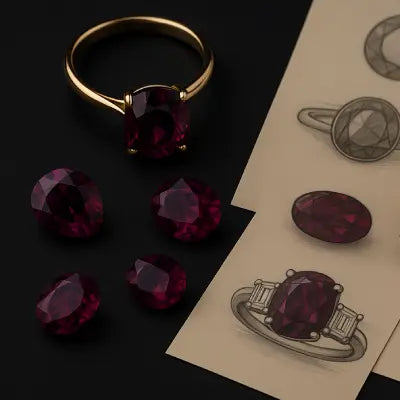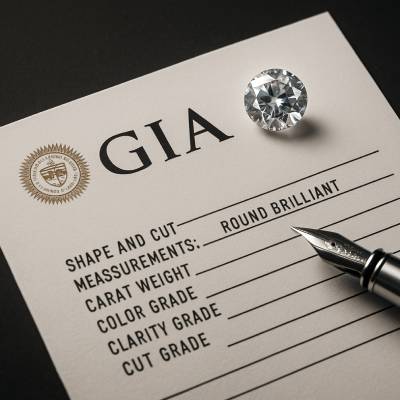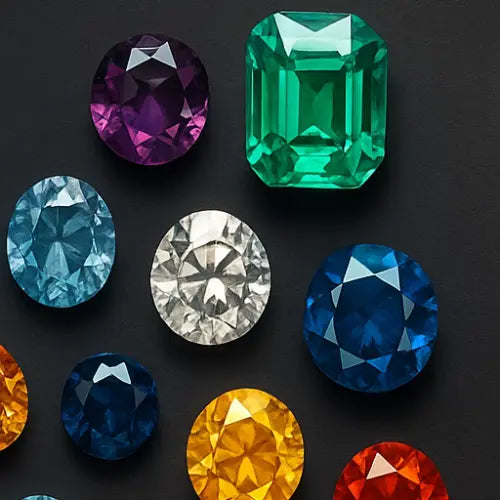In jewelry making, every detail matters. Each step in creating jewelry requires precision and attention to detail. Today, we are going to talk about the styles of stone settings. They are important in determining how it will look in a piece of jewelry. A Bay Area Handcrafted engagement ring is a great example of how setting styles can elevate the uniqueness of a design. The right setting of a gem enhances its qualities. This is its color, brilliance or a certain optical effect. If you have a stunning, icy diamond, you'll want to place it in a prong setting. You can showcase its brilliance.
Jewelers use a variety of methods to set gems. The choice of setting depends on the stone's cut and proportions. These methods and techniques are widely used in the jewelry industry. Let's discuss the most popular of them. After reading this, you'll want to take a closer look at your jewelry. Let's explore the world of jewelry making.
Classic Stone Setting Techniques: Prong and Bezel Settings
The prong setting is one of the most popular and classic techniques. It involves using small metal prongs to hold the gemstone in place. They allow a large portion of the stone to be exposed. This exposure maximizes the light that can enter the gemstone. It enhances its brilliance and sparkle. The prong setting is ideal for diamonds and other precious stones. This is especially suitable for engagement rings. It highlights the stone’s natural radiance. Are you wondering how to set a stone in a ring? The prong setting is a great starting point. This is because of its versatility and ability to hold a variety of gemstone shapes securely.
The bezel setting is a more modern and protective jewelry type. It encircles the gemstone with a metal band. This setting offers a secure and sleek look. It is ideal for those who prefer a minimalistic and elegant design. This setting ensures the gemstone is well protected from damage. The bezel setting is particularly suited for softer stones or gemstones. They are set in rings or pendants worn daily. It reduces the risk of chipping or loosening.
Here is a comparison and ideal uses of different types of stone settings:
-
Prong: These settings are best for gems that benefit from maximum light exposure. These are diamonds or colored stones. Prong settings are usually present in engagement rings or statement pieces.
-
Bezel: Such settings are perfect for those prioritizing security and durability. This makes them ideal for rings, pendants, or bracelets featuring softer stones. Bezel settings are also suitable for those seeking a modern look.
You must understand these two popular stone-setting techniques. You can choose the ideal setting. It will best showcase your gem's beauty. These techniques also provide the necessary protection.
Alternative Stone Setting Styles: Channel, Pave, and Tension Settings
The channel setting is a sleek and modern technique. There, gemstones are directly placed in a row within a metal channel. No prongs or settings protruding above the stones. This creates a smooth, continuous appearance. It is ideal for a refined, polished look. The channel setting is perfect for smaller gemstones. It is often used in wedding bands and bracelets. Such a setting protects them from damage. It provides a seamless flow of stones. This setting type is also highly secure. It ensures that gems stay in place even with everyday wear.
Tiny gems are set closely together in the pavé setting. A minimal metal is visible between each stone. The effect creates a surface covered with sparkling stones. It gives the jewelry a “paved” look. Engagement rings, earrings, and accent pieces often use this setting technique. It adds a lot of brilliance and shines without overwhelming the design. The gemstone setting techniques here require precision. It ensures that each stone is evenly placed. They create a smooth and uniform appearance.
The tension setting is a bold, modern approach to gem placement. Instead of using prongs or bezels, the stone is held in place by the pressure of the metal band. It creates a "floating" effect. This setting allows maximum light exposure. It makes the gemstone appear more vibrant and striking. Let’s discuss how to set stones in jewelry using the tension method. It requires precise calculations and craftsmanship. This requires applying the correct pressure without damaging the stone. Such a setting is often used for statement rings. There, the gemstone is the focal point. These are diamonds or other hard stones:
-
Channel: This setting is ideal for continuous rows of smaller gemstones. It is commonly used in wedding bands and bracelets.
-
Pave Setting: This setting is perfect for creating a surface covered in small stones. It provides maximum sparkle.
-
Tension Setting: Such a setting showcases a single, larger gemstone. This happens in a modern, floating style.
Advanced Stone Settings: Flush, Invisible, and Bar Settings
The flush setting involves setting a gem level with the surface of the metal. So, it sits flat and is almost entirely encased by the surrounding metal. This results in a sleek, low-profile design. It minimizes the chance of the gemstone catching on anything. It’s perfect for those who prefer a clean, modern look with enhanced durability. This setting is often used in wedding bands or men's jewelry. The technique ensures the stone settings remain secure.
The invisible setting is one of the most sophisticated stone setting types. This technique is one of the most complex settings in jewelry making. Such a setting allows gemstones to be closely placed together. The stones appear to float with no visible metal support. It creates the illusion that the stones are floating within the jewelry piece. This setting type is ideal for creating dramatic effects with larger stones.
The bar setting involves placing gems between vertical metal bars. They secure each stone without covering its sides. This technique allows more light to shine through the gemstones, maximizing their brilliance. The bar setting is often used in bracelets and rings. It's known for its distinctive, open design. It adds a unique element to jewelry.
Here is a comparison of advanced jewelry setting types:
-
Flush: This setting is ideal for a sleek, low-profile design. It is particularly found in bands and men's jewelry.
-
Invisible: Such a setting is best for creating a floating effect with minimal metal visibility. It is used for dramatic designs.
-
Bar: This setting enhances gemstone brilliance with an open and structured design.
Each advanced stone setting offers a unique way to showcase gemstones. It combines security and style.
How to Choose the Right Stone Setting for Your Jewelry Designs

Selecting the perfect gem setting creates beautiful and functional jewelry. Understanding how to set stones in a ring can make all the difference. It ranges from gemstone types to specific jewelry pieces:
-
Choosing Based on Gemstone Type: The stone setting often depends on its characteristics. This is the hardness, shape, and size. Softer stones are opals or pearls. They require protective settings like bezels. Harder stones are diamonds or sapphires. They can be showcased in prong or tension settings for maximum brilliance. Irregularly shaped stones might benefit from custom settings. They accommodate their unique form. Understanding how to set a stone in silver ensures its security.
-
Considering Durability and Design: Balancing these goals is crucial. If the piece will be daily worn, like an engagement ring, prioritize secure settings. These may be bezels or flush designs. They protect the gemstone. You can explore intricate settings for statement pieces worn occasionally. They are invisible or tension styles that emphasize aesthetics. Consider how the metal and stone interact. Achieve durability and a striking appearance.
-
Setting Styles for Different Jewelry Pieces: Different types of jewelry require different setting styles. Rings often feature prongs, bezels, or flush settings. These provide durability and visual appeal. Understanding how to set a stone in a pendant is key for necklaces. Pendant settings often need to balance elegance with security. Channel and pave settings are ideal for bracelets. They offer a continuous flow of stones. It complements the piece's design and function.
Selecting the right stone setting is a blend of artistry and practicality. For more information about jewelry settings, please contact us.






